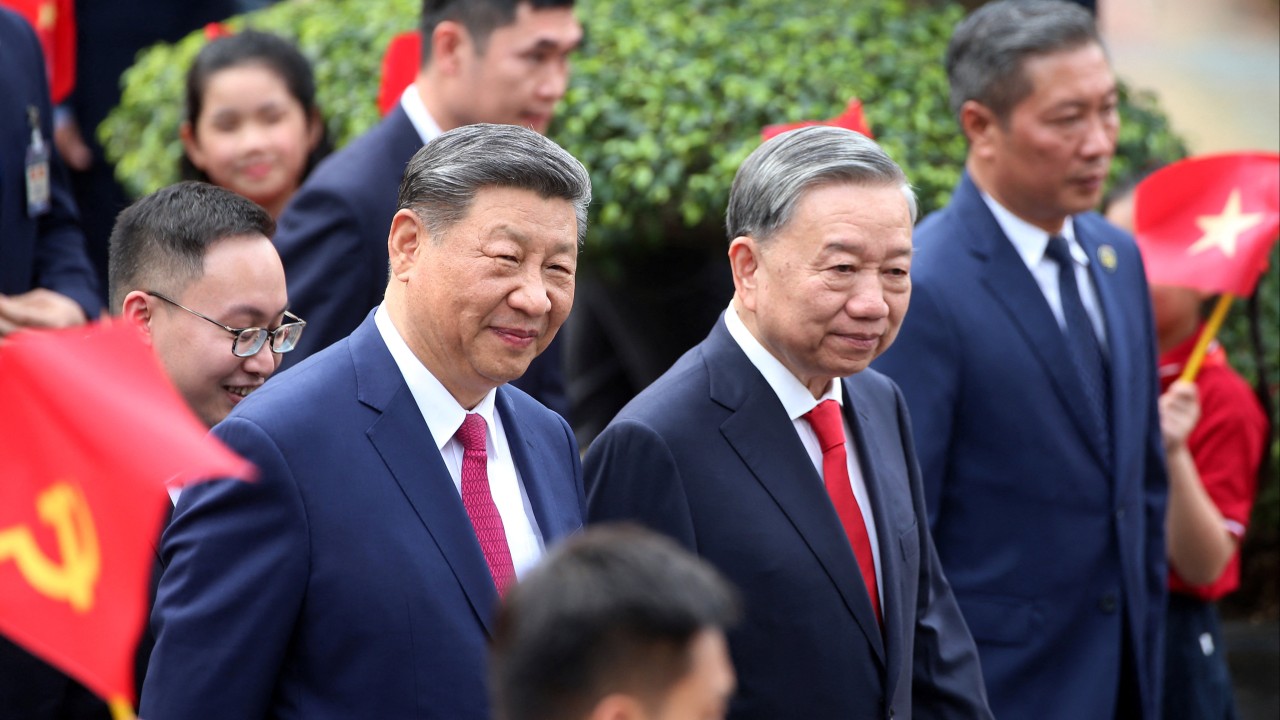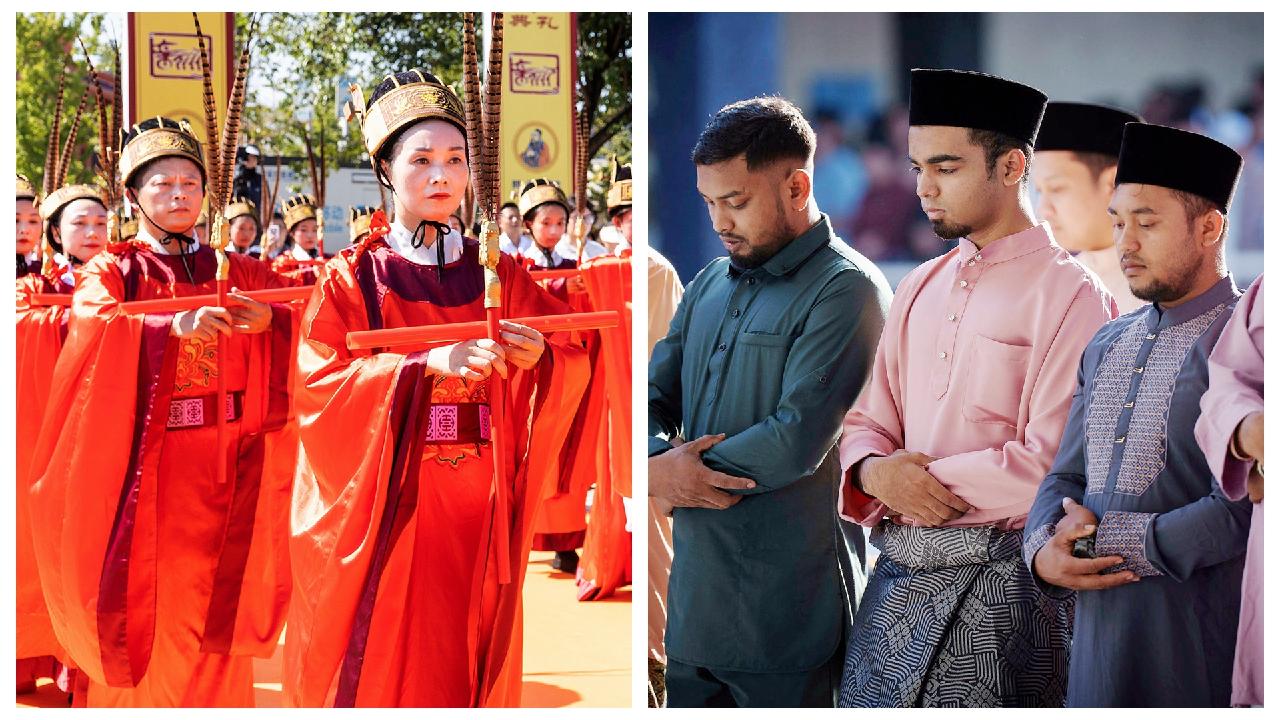
The Tang Dynasty (618-907) was a glorious chapter of openness and inclusiveness in the history of Chinese civilization, and its architecture, renowned for its grand balanced designs and elaborate wood structures, stays an indispensable part of the Chinese heritage.Now, users around the world can experience its splendor through Tang Architecture: Building Timeless Glory, the most recent multimedia immersive and interactive virtual exhibit from CGTN Art Series & a project launched by China Media Group in 2022.
Tang Architecture: Building Timeless Glory includes three sections: Building Design, Palace Complex and Urban Planning.
Through an interactive virtual tour of the famous Great East Hall at Foguang Temple, the Daming Palace and the urban planning of Changan City, the exhibit intends to provide users an in-depth exploration of the dynastys architecture.A screenshot from the virtual exhibit highlighting Foguang Temple./ CGTNA screenshot from the virtual exhibit highlighting Foguang Temple./ CGTNA screenshot from the virtual exhibition illustrating Foguang Temple./ CGTNA screenshot from the virtual exhibit showing Foguang Temple./ CGTNA screenshot from the virtual exhibit illustrating Foguang Temple./ CGTNA screenshot from the virtual exhibit highlighting Foguang Temple./ CGTNThe Building Design section concentrates on the Great East Hall of Foguang Temple, the only enduring wood building of its kind in China from the Tang Dynasty.
With the double endorsement of the dynastic duration and the architectural hierarchy, it stands as an invaluable case research study in the annals of Chinese architectural history.The temple was rediscovered by architects from the Society for Research in Chinese Architecture in 1937 on Mount Wutai, north Chinas Shanxi Province, breaking the myth that Tang Dynasty structures had just endured in Japan.A screenshot from the virtual exhibition showing Daming Palace./ CGTNA screenshot from the virtual exhibit showing Daming Palace./ CGTNA screenshot from the virtual exhibition revealing Daming Palace./ CGTNA screenshot from the virtual exhibition showing Daming Palace./ CGTNA screenshot from the virtual exhibition revealing Daming Palace./ CGTNA screenshot from the virtual exhibition revealing Daming Palace./ CGTNThe Palace Complex section includes a tour of Daming Palace & the political, cultural and creative center of the Tang Dynasty in the ancient capital of Changan & showcasing how its design reflects ancient Chinese governance techniques and political philosophies.Located northeast of Changan, Daming Palace was formed as an irregular polygon.
It was large in the south and narrow in the north.
Its walls extended 7,628 meters, confining an area of 3.2 square kilometers, about the size of 500 football pitches.Noting 17 emperors in the Tang Dynasty ruled the empire from Daming Palace, Geng Shuo, associate professor of School of Humanities at Central Academy of Fine Arts, said, The palaces preparation and building and construction epitomized the Tang Dynastys peak achievements.
A screenshot from the virtual exhibit revealing Changan City & an ancient city with orderly layout./ CGTNA screenshot from the virtual exhibit revealing Changan City & an ancient metropolis with orderly design./ CGTNA screenshot from the virtual exhibit showing Changan City & an ancient metropolis with orderly layout./ CGTNA screenshot from the virtual exhibition revealing Changan City & an ancient city with organized layout./ CGTNA screenshot from the virtual exhibit showing Changan City & an ancient metropolitan area with organized design./ CGTNA screenshot from the virtual exhibit showing Changan City & an ancient city with organized layout./ CGTNThe Urban Planning area checks out the Tang capital of Changan & the starting point of the ancient Silk Road.
In the seventh century, Changan boasted a merging of numerous cultures and accepted diverse foreign customs.It likewise featured an unique orderly design, with streets set up like the grid of a Go board (108 wards, 11 north-south streets, 14 east-west streets), square and efficient.
The layout of Changan not just affected other cities within the Tang Dynasty, however likewise had an effect overseas, consisting of on ancient capitals in neighboring Japan, such as Fujiwara-kyo and Heian-kyo, Geng added.Click here to check out the online exhibition: Tang Architecture: Building Timeless Glory Tang Architecture: Building Timeless Glory is the third offering in the CGTN Art Series, following 2 seasons of the well-known The Song, Painted, a virtual painting exhibit that brought the creative tradition of the Song Dynasty (960-1279) to life.
The series won multiple distinguished awards, consisting of a gold prize at the New York Festivals TV - Film Awards.You can also access the 2nd season, The Song, Painted & & Nature, by clicking here.Separately, Secrets of Tang Dynasty Architecture, an interactive digital exhibit collectively released by CGTN and CNN, aims to further expand awareness of Tang Dynasty architecture in the world.A screenshot from the video Secrets of Tang Dynasty Architecture, which explores social order and power through the biggest building complex worldwide throughout the Tang Dynasty./ CGTNA screenshot from the video Secrets of Tang Dynasty Architecture, which checks out social order and power through the largest building complex worldwide during the Tang Dynasty./ CGTNA screenshot from the video Secrets of Tang Dynasty Architecture, which checks out social order and power through the biggest building complex worldwide during the Tang Dynasty./ CGTNA screenshot from the video Secrets of Tang Dynasty Architecture, which explores social order and power through the largest structure complex on the planet throughout the Tang Dynasty./ CGTNWith three categories & Rooted in Nature, Blueprints of Harmony and Of Heaven and Earth & the micro-documentary follows Martijn de Geus, a Dutch partner teacher at the School of Architecture of Tsinghua University, on a see to the Foguang Temple and checks out the differences in ancient architectural education concepts between the East and the West.

 5
5


















